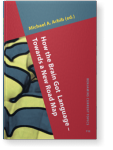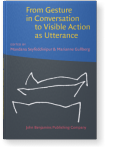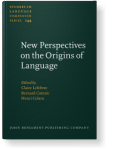Michael C. Corballis
List of John Benjamins publications for which Michael C. Corballis plays a role.
2020 The comparative neuroprimatology 2018 (CNP-2018) road map for research on How the Brain Got Language How the Brain Got Language – Towards a New Road Map, Arbib, Michael A. (ed.), pp. 370–387 | Chapter
We present a new road map for research on “How the Brain Got Language” that adopts an EvoDevoSocio perspective and highlights comparative neuroprimatology – the comparative study of brain, behavior and communication in extant monkeys and great apes – as providing a key grounding for hypotheses on… read more
2020 Mental travels and the cognitive basis of language How the Brain Got Language – Towards a New Road Map, Arbib, Michael A. (ed.), pp. 352–369 | Chapter
I argue that a critical feature of language that distinguishes it from animal communication is displacement, the means to communicate about the non-present. This implies a capacity for mental travels in time and space, which is the ability to call to mind past episodes, imagine future ones or… read more
2018 The comparative neuroprimatology 2018 (CNP-2018) road map for research on How the Brain Got Language How the Brain Got Language: Towards a New Road Map, Arbib, Michael A. (ed.), pp. 370–387 | Article
We present a new road map for research on “How the Brain Got Language” that adopts an EvoDevoSocio perspective and highlights comparative neuroprimatology – the comparative study of brain, behavior and communication in extant monkeys and great apes – as providing a key grounding for hypotheses… read more
2018 Mental travels and the cognitive basis of language How the Brain Got Language: Towards a New Road Map, Arbib, Michael A. (ed.), pp. 352–369 | Article
I argue that a critical feature of language that distinguishes it from animal communication is displacement, the means to communicate about the non-present. This implies a capacity for mental travels in time and space, which is the ability to call to mind past episodes, imagine future ones or… read more
2014 The word according to Adam: The role of gesture in language evolution From Gesture in Conversation to Visible Action as Utterance: Essays in honor of Adam Kendon, Seyfeddinipur, Mandana and Marianne Gullberg (eds.), pp. 177–198 | Article
Adam Kendon and I disagree on just one aspect of the role of gesture in language evolution. Where I propose that manual gesture preceded speech, he argues that gesture and vocal language evolved as equal partners. Some arguments for the gesture-first theory no longer seem to carry force, but the… read more
2013 Gestural theory of the origins of language New Perspectives on the Origins of Language, Lefebvre, Claire, Bernard Comrie and Henri Cohen (eds.), pp. 171–184 | Article
Several lines of evidence suggest that human language originated in manual gestures, not vocal calls. These include: (1) the use of the hands as the more natural way to depict events in space and time; (2) the ability of nonhuman primates to use manual action flexibly and intentionally; (3) the… read more
2012 How language evolved from manual gestures Gesture 12:2, pp. 200–226 | Article
Several lines of evidence suggest that human language originated in manual gestures, not vocal calls. These are the ability of nonhuman primates to use manual action flexibly and intentionally, the nature of the primate mirror system and its homology with the language circuits in the human brain,… read more




